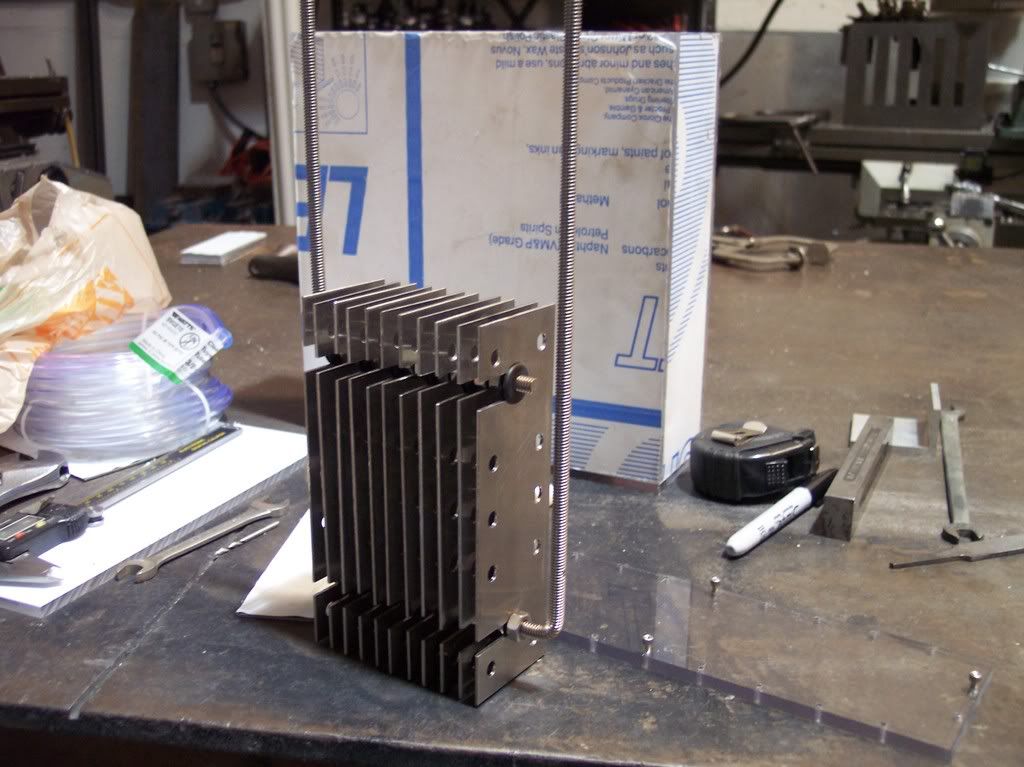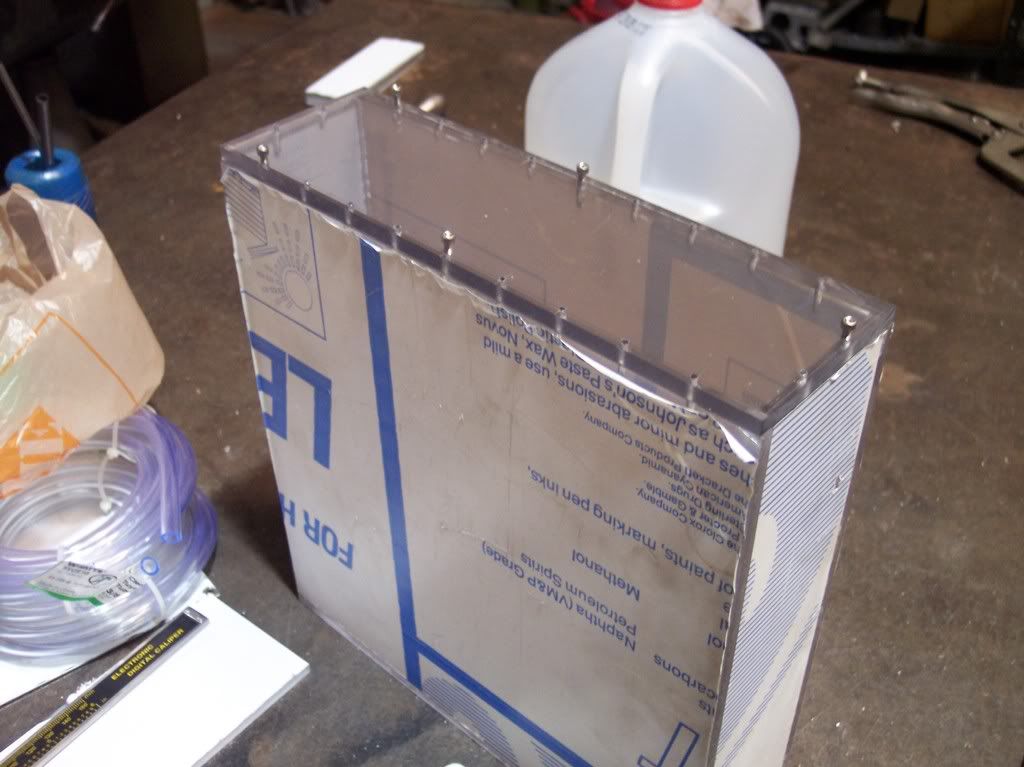Built them from a $10 set of e-plans.The plans are for building a basic hydro-gen,application is somewhat vehicle specific for best result.Like I said this is to let me see for myself how doable it is,then I have plans for a more technical and efficent unit.I've made some minor improvments to the basic plans and was thinking of posting them if it works out. There's no copyright on these,besize this would be my own version.
Announcement
Collapse
No announcement yet.
Hydrogen gen.
Collapse
X
-
Check out http://www.water4gas.com. I'm a little skeptical because the guy is trying to sell the book/idea, but there are lots of other sites out there dealing with this. Do a search for Brown's gas or HHO and you will come up with lots of stuff.
Here's my question on the whole thing. What happens to the highly explosive hydrogen gas when you get into a collision?
Comment
-
I don't have those particular plan so I can't really comment on them.Some of the plans have storage tanks and some are generate as you go,yes the hydro tank would be a potential hazard but so are gasoline tanks.I perfer to work with the generate as you go and there is no danger because there's no storage.The more techanical plans I have are "Run a car on water" and I've only glanced through them.My goal today is to get a baseline mpg without hydrogen and install the unit in the vehicle but not do the final connection til I get a baseline.I want this to be as accurate as possible before going forward.
Comment
-
?!?! Are you talking about the junk sheet-metal table? Tables are a good thing in the machining tradeOriginally posted by IanSzgatti View Postnow that is one nice flat work surface
Comment
-
Lol, I'm not surprised a thread has started here about hydrogen generators... I've had 3 seperate friends ask me about this, and a friend of my dad's who owns a tunex and used to teach high school automotive . So I did a little research on different designs, and yours, FF, is the best i've seen. Identical to this one i found online (more or less identical) http://waterpoweredcar.com/simplebooster.html
. So I did a little research on different designs, and yours, FF, is the best i've seen. Identical to this one i found online (more or less identical) http://waterpoweredcar.com/simplebooster.html
How much you want for that FF? Should have had you send that with my adapter... Oh well. Their first design they used just SS light switch covers then went to a design closer to yours. I tried to find some aerated SS at home depot with no luck... Think i'll try using the light switch covers for now until I get more into it, or until you start selling the parts from yours
Should have had you send that with my adapter... Oh well. Their first design they used just SS light switch covers then went to a design closer to yours. I tried to find some aerated SS at home depot with no luck... Think i'll try using the light switch covers for now until I get more into it, or until you start selling the parts from yours  .
.
So you used rubber gromets to seperate the plates from the anode and cathode (rods)? think I'm going to go the cheap route with rubber hose... But question, looks like the nut is touching that plate without a insulator. So are you leaving a nut to touch the outside plate on either side. Like 1 nut touching the plate on the left for the ground, 1 on the far right for the power? Guess that makes a lot more sense then what I was thinking... That way it just jumps between the plates instead of rod to plate. I'm just curious to why you used 11 plates?
You asked about seperating the hydrogen and oxygen after it's produced, does it need to be seperated? Can't you just produce the hydrogen, let it float to the top where a vac port is located? Suck both the hydrogen and oxygen into the engine...
With the o2 sensor question, I don't see any problem... It senses how much air is in the system, doesn't care what else comes out. So as long as proper combustion is happening, it won't know the difference. As hydrogen goes in being burned, car will go rich because of the extra combustable, then it will reduce fuel saving you gas... I don't see why it would burn up an O2 though. Hydrogen burns cooler than gas does anyways. I think race fuel kills o2s because of all the additives in it...You may or may not know 10 times what i do.
ASE Master certified. Just means I can take tests. GM ASEP Graduate.
95' Z26, ported/cammed 3400/3500, OBD2, 282, T3T4. Boxes almost all empty..
Comment
-
LOL. It's not really mine, but it's kind of a collaboration of ideas among a few people in our buildings, and one guy is building a handful of them.
The lexan was only $80 and was enough to make 4 boxes, that was Norm's idea, I'm curious to see how it holds up.
Another friend (that I mentioned before) has made 4 differnt designs using various catalysts and material for the anode and cathode. We are going to bech test this one to use baking soda.
Not sure why the 11 plates, I think it was so he could get as many plates as possible out of the sheet metal spread across the 4 boxes.
One of the guys in our group of buildings bought a commercial unit and it has two hoses comming from it to the engine of the vehicle. He was under the impression that if you keep the hydrogen and oxygen together that if not seperated, it gould turn back inot water vapor.
That commercial unit caused the idle to go about 200rpm higher in the test Honda.
The question comes up in my head about the o2 sensors, because excessive moisture is the result of burning hydrogen, on of the worst things for it.
Comment
-
I kinda think 11 plates is a little excessive... Reading around and no1 does more than 7. The reason they use the multiple plates in the first place is to drop the 12V down to 2ish. Because you only need 2 V to split the water. When you're using more than that, then you are causing more heat than you need, so the water is boiling more than being broken down. But if you want to try 11, i'm curious to see how it will work
Well, when they hydrogen goes into the intake system it's going to be introduced to oxygen from the air being sucked into the engine... So why does it need to be seperated if it's going to be combined with air anyways?
Moisture may be bad for O2s, but water is a natural by product of combustion. So there is always moisture on the O2...You may or may not know 10 times what i do.
ASE Master certified. Just means I can take tests. GM ASEP Graduate.
95' Z26, ported/cammed 3400/3500, OBD2, 282, T3T4. Boxes almost all empty..
Comment
-
Hmm. Well the guy we are working with didn't want to listen to me and used 1/2 cup of baking soda, 1 gallon of water and a straight connection to the battery. It melted the lid around the leads. He wants to figure out a way to run it directly from the vehicle's 12v chargineg system, I think with the excessive materials he needs less voltage.Originally posted by OldSkoolGP View PostWhat's the scoop on this? I know a cople of guys were testing this themselves. What have you found out so far?
What do I know?
Comment
-
From all the different set ups i've read, you actually want lower voltage... 2V ish. When using a 12 V source, as you just found out, most of the energy is released as heat, instead of "splitting the molecule". But with the plates being insulated from one another, there should be a major voltage drop across the plates and the heat should be contained within the water.. But i guess with heat transfer it will just follow it's way up the cathode and anode .
.
Isn't the vehicles charging system closer to 14V? . Me just being a Smart A. Sorry
. Me just being a Smart A. Sorry  You may or may not know 10 times what i do.
You may or may not know 10 times what i do.
ASE Master certified. Just means I can take tests. GM ASEP Graduate.
95' Z26, ported/cammed 3400/3500, OBD2, 282, T3T4. Boxes almost all empty..
Comment
-
Oh, it made plenty of gas in a short amount of time, then the cathode and anode started falling down into the box lol.
This was actually simulated like it would be in a car with a battery directly connected to the box, and a charger on the battery
Either way, I wasnt there when it went on, and I warned him that it was too much. I said to him "Norm, I guess it's go big or go home with you, eh?". Now he seems to think taking 5 plates out is going to have a different outcome, but he wants to try it anyways against my advice. I think he's just trying to avaoid making a circuit, and I even printed out a simple one to build to make it easy
Comment



Comment